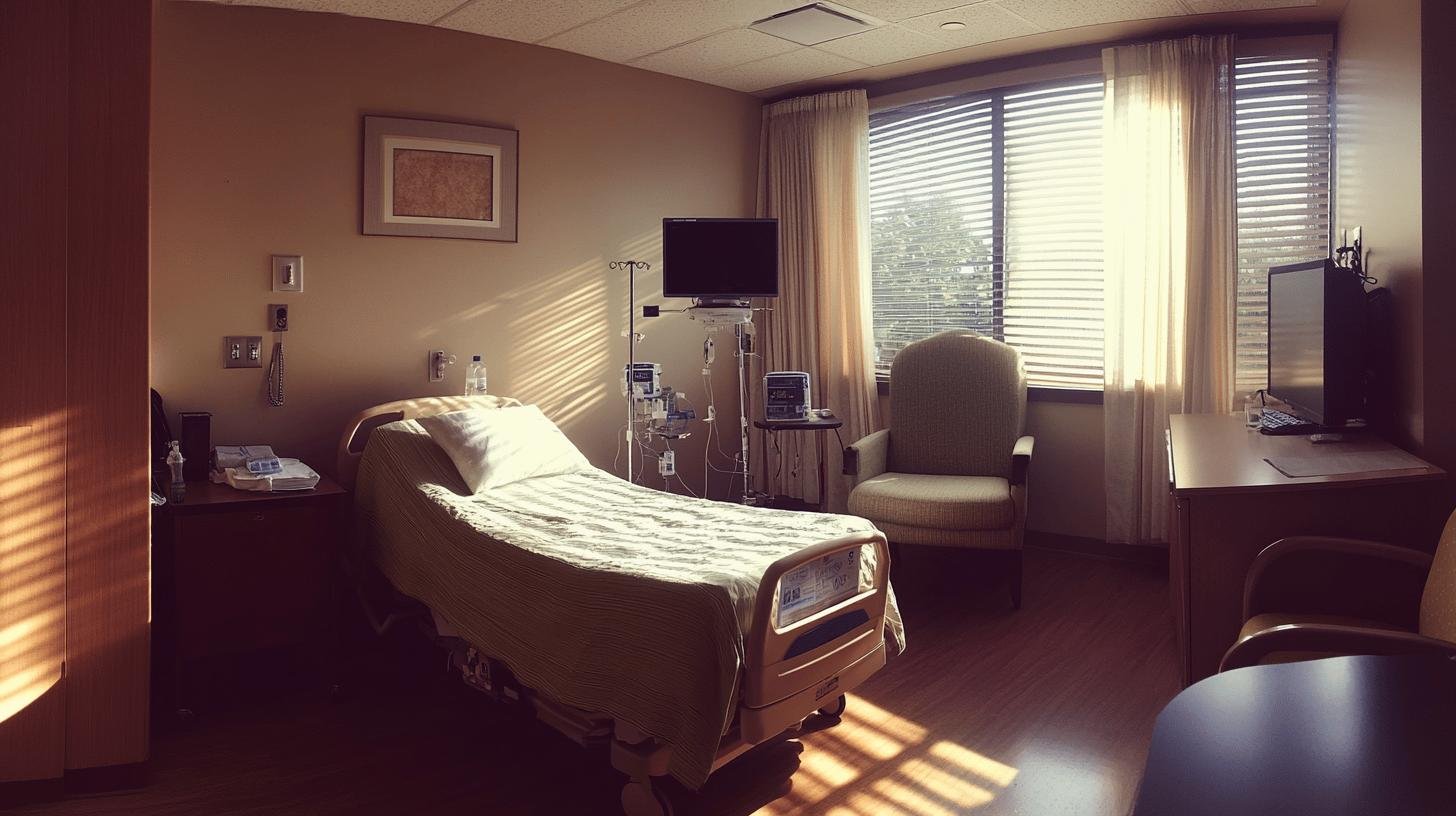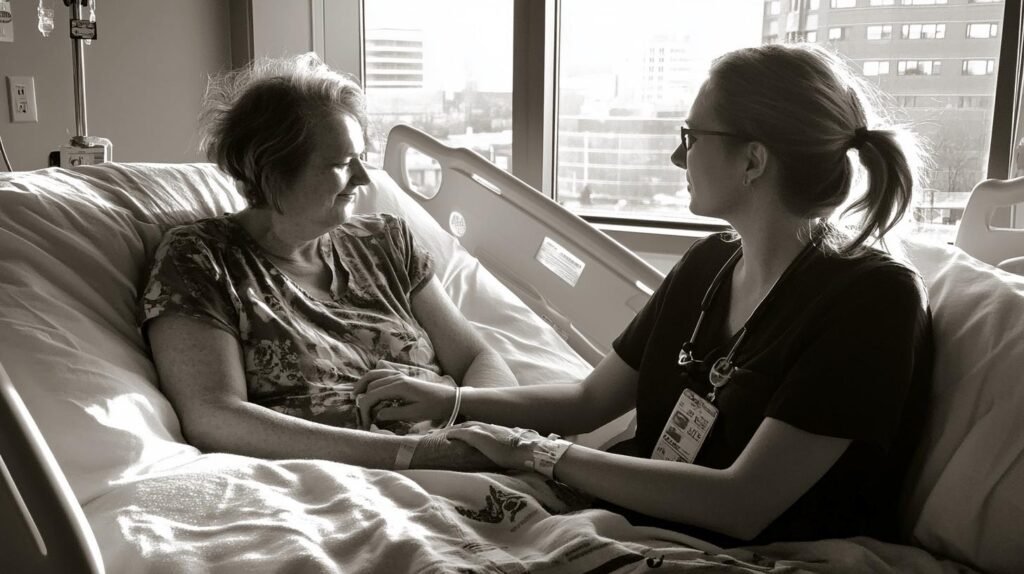TL;DR:
-
Types of Cancer Care:
- Palliative Care: Symptom relief at any stage.
- Hospice Care: Comfort for end-of-life.
- Curative Care: Targets cancer elimination.
- Supportive Care: Manages side effects.
- Holistic Care: Integrates overall well-being.
-
Palliative vs. Hospice:
- Palliative: Improves quality of life at any stage.
- Hospice: Supports terminal patients for the last 6 months.
-
Home Care Services: IV treatments, nursing support, symptom management, emotional support.
-
Supportive Care: Nutritional support, pain management, emotional/spiritual support.
-
Direct Primary Care (DPC): Offers personalized, hassle-free healthcare, improving communication and care quality.
-
Transitioning to Palliative Care: Starts at any cancer stage and involves collaboration and planning.
Do you ever feel like navigating cancer treatment is like trying to read a novel in a language you don’t understand? With so many types of care for cancer patients available, it can seem like finding the right path is near impossible. But don’t worry; I’m here to break it down for you! We’re diving into the essential options—palliative, hospice, curative, supportive, and holistic care—giving you the toolkit to make informed decisions for your loved ones. So, grab a coffee and let’s unravel these options together so you can focus on what’s truly important—better health outcomes.
Understanding Different Types of Care for Cancer Patients
Navigating cancer treatment can be confusing. Understanding available care types helps make sense of it all. Knowing your options lets you make choices that suit your needs and situation. Each care type offers unique benefits, whether managing symptoms, improving life quality, or aiming for a cure.
Here’s a snapshot of the main types of care for cancer patients:
- Palliative Care: Relieves symptoms at any cancer stage.
- Hospice Care: Offers comfort for end-of-life stages.
- Curative Care: Targets cancer elimination and remission.
- Supportive Care: Manages side effects and boosts well-being.
- Holistic Care: Integrates body, mind, and spirit care.
You might be asking, “How do these care types fit into my treatment plan?” It’s about blending them as needed. For instance, curative treatments can coincide with palliative care for symptom relief. Supportive and holistic approaches nurture both physical and emotional well-being. Understanding these care types helps tailor a plan that supports your unique cancer journey.
Palliative vs Hospice Care: Key Differences and Benefits

Palliative care is about enhancing life quality through a holistic approach, addressing medical, emotional, and social needs. Suitable for any age and cancer stage, it’s not about giving up but living comfortably while managing symptoms. Consider it a support system.
Hospice care differs. It steps in when treatment is no longer curative and focuses on end-of-life support. Hospice offers dignity and comfort during life’s final stage and emotionally supports families. While both palliative and hospice care enhance life quality, hospice emphasizes peace as life ends.
| Aspect | Palliative Care | Hospice Care |
|——————–|——————————————|—————————————–|
| Goals | Improve quality of life, manage symptoms | Provide comfort, support end-of-life care |
| Timing | Any stage of cancer | Last stages of life |
| Patient Eligibility| Any age, any stage | Terminal illness, typically last 6 months|
Home Care Services for Cancer Patients
Ever considered how home care could empower cancer patients? Home care is perfect for those needing special attention, especially when health declines. The main perk is comfort—patients receive top-notch care without leaving their homes. It eases cancer-induced fatigue by avoiding lengthy hospital trips and offers personalized care in a familiar setting.
Curious about home care services? Here’s what’s available:
- Intravenous (IV) Treatments: Get medication from home.
- Nursing Support: Nurses visit to check on your well-being.
- Symptom Management: Customized plans fight side effects.
- Emotional Support: A listening ear when needed.
These services make home care a flexible option, blending medical support with home comfort.
Supportive and Holistic Care Approaches

Wondering how supportive care fits into cancer treatment? It’s the cushion easing treatment’s challenges. Services like nutritional support ensure you’re eating right, and oncology rehabilitation helps regain strength. Pain management tackles discomfort, while spiritual support offers peace. Addressing these areas, supportive care aims to boost life quality.
Holistic care is like a cosy blanket for all parts of your being—medical, emotional, and social. It sees you completely, not just as a patient. This approach integrates varied care aspects, turning chaos into harmony.
Here’s what holistic care involves:
- Nutritional Support
- Pain Management
- Emotional Support
- Spiritual Care
These components work cohesively, nurturing life during cancer treatment.
The Role of Direct Primary Care in Cancer Treatment
Have you heard of direct primary care (DPC)? It’s like a VIP pass to hassle-free healthcare. Patients pay a simple fee for primary services, eliminating insurance claims and waits. This model benefits cancer patients by allowing more time and attention to physicians. DPC offers longer appointments, direct team access, and personalized care.
Why is DPC good for health and budget? Traditional healthcare is costly, with hidden charges. DPC flips the script, presenting clear costs and patient-focused care. No rushed visits—have meaningful talks about treatment, lifestyle, and health goals. It’s your health journey—in your control.
Here’s how DPC enhances cancer treatment:
- Improved Team Communication: Smooth interaction, no phone tag.
- Personalized Care Plans: Strategies crafted for you.
- Reduced Hospital Readmissions: Stay healthy, avoid ER visits.
- Enhanced Quality of Life: Focus on your priorities.
With DPC, you’re empowered to shape a healthcare plan that suits you.
Transitioning to Palliative Care: Considerations and Planning

Transitioning to palliative care may seem daunting, but it enhances life quality. Timing is important—it can start at any cancer stage–even alongside curative treatments for symptom management. Consider its benefits: symptom relief and emotional support. Discuss goals and values with your healthcare team to ensure your care aligns with your wishes.
Planning involves collaboration. Work with healthcare providers to explore options. Here’s a checklist to guide decisions:
- Collaborative Decision-Making: Involve family and healthcare team discussions.
- Understanding Care Options: Examine what palliative care offers at various stages.
- Planning for Future Needs: Anticipate changes and prepare for hospice transitions if needed.
Final Words
Diving into the types of care for cancer patients, we’ve seen the need to understand each option’s importance—palliative and hospice care each have benefits. In contrast, home and holistic care provide unique support systems.
Direct primary care stands out by enhancing treatment through personalized services and improved communication.
As patients navigate their journey, integrating these care types leads to better support and outcomes. Embrace these options to create a personalized path that enhances both quality of care and life.
FAQ
Q: What kind of care do cancer patients need?
A: Cancer patients need a mix of care types, such as palliative, hospice, curative, supportive, and holistic. This helps with their medical, emotional, and social needs.
Q: What are the different types of cancer care?
A: We’re talking palliative, hospice, curative, supportive, and holistic care. Each type targets the different needs of cancer patients and offers a full spectrum of support.
Q: What are the types of supportive care for cancer patients?
A: Supportive care includes nutritional support, oncology rehab, pain management, and spiritual care. It’s all about enhancing the quality of life during treatment.
Q: What care is available for cancer patients?
A: Cancer care options are diverse, including palliative, hospice, and home care services, as well as supportive and holistic approaches. There’s a wide array to meet every patient’s needs.
Q: What is the latest cancer treatment?
A: The latest cancer treatments often involve advanced therapies like immunotherapy. These are designed to boost the body’s natural defences to fight cancer cells.
Q: What is immunotherapy cancer treatment?
A: Immunotherapy is a treatment using the body’s immune system to attack cancer. It’s like teaching your body’s warriors to recognize and fight cancer cells.
Q: What is palliative care for cancer patients at home?
A: Palliative care at home focuses on comfort and quality of life. It offers pain and symptom management and emotional and social support in a familiar environment.
Q: What is palliative care cancer life expectancy?
A: Palliative care doesn’t change life expectancy but enhances the quality of life regardless of prognosis. It supports patients in living as fully as possible.
Q: What is the difference between palliative and hospice care?
A: Palliative care can start at diagnosis and go beyond end-of-life care, while hospice is strictly for end-of-life care. Both aim to comfort and support.

